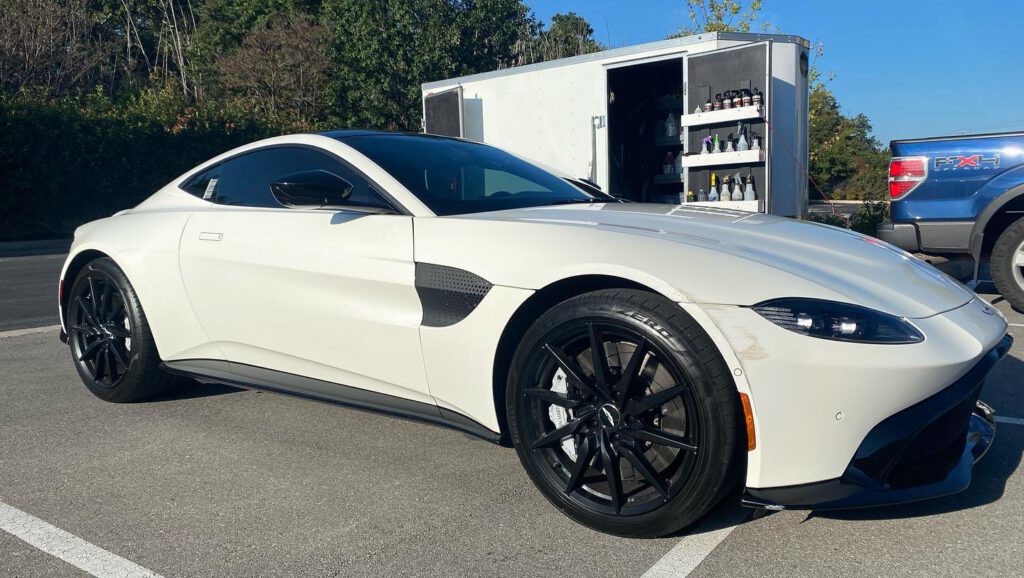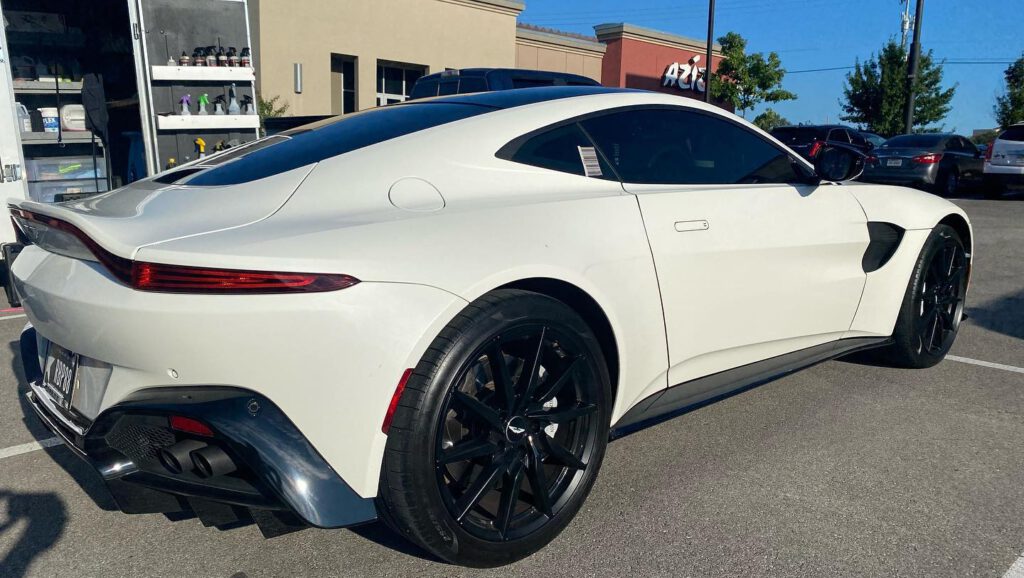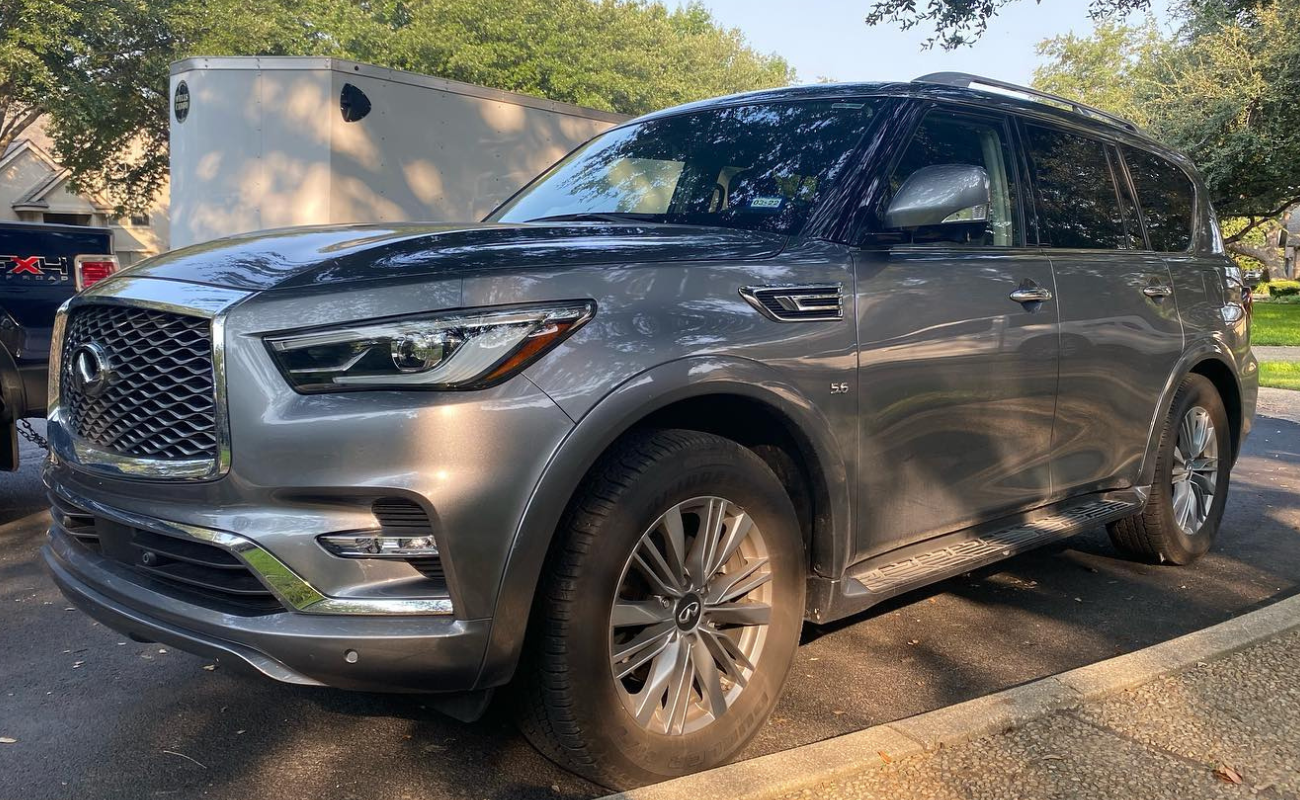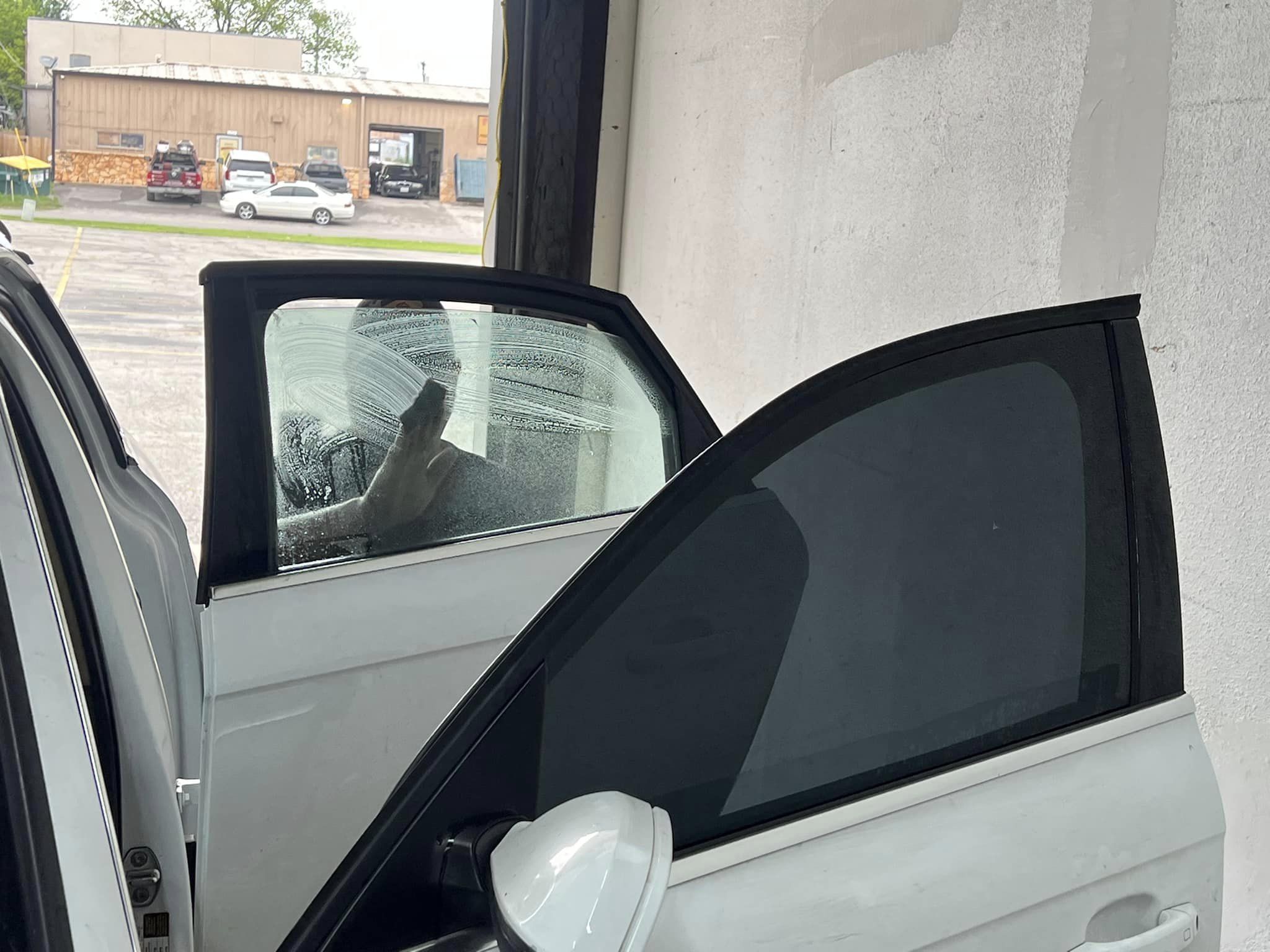Safeguard your car with paint protection film, guarding it from stone chips, swirl marks, and UV fading. Opt for transparent polyurethane, water-repellent films for customized benefits. Prepare your car surface thoroughly before applying the film, guaranteeing seamless adhesion. DIY installation demands attention to detail, while professionals deliver impeccable results and warranties. Budget for initial costs varying based on size and film quality, cutting down on long-term maintenance expenses. Follow maintenance tips for longevity and compare top brands like XPEL and 3M. Securely remove the film when necessary using heat and care. Dispel myths and make certain your car’s paint remains pristine.
Key Takeaways
- Benefits include safeguarding paint, reducing maintenance costs, and maintaining resale value.
- Types include transparent and water-repellent films tailored to specific needs.
- Installation involves thorough surface prepping, careful application, and meticulous finishing touches.
- Consider professional installation for flawless results and DIY for rewarding projects with patience.
- Costs vary based on size and film quality, with long-term savings and enhanced vehicle value.

Benefits of Paint Protection Film
By safeguarding your car’s paint from road debris and environmental elements, paint protection film ensures long-lasting beauty and protection. This see-through film acts as a barrier, preventing stone chips, bug splatter, scuffs, and fading caused by UV rays. Picture driving without worrying about gravel dinging your car’s pristine paint job or sun exposure dulling its shine. Paint protection film provides peace of mind, knowing that your vehicle’s exterior is shielded against everyday hazards.
Not only does paint protection film offer physical protection, but it also maintains the resale value of your car. With the film in place, your paint remains in impeccable condition, preserving the original factory finish. Potential buyers will appreciate the well-maintained exterior, increasing the desirability and value of your vehicle. Additionally, by preventing discoloration and oxidation, the film ensures that your car looks newer for longer.
Furthermore, paint protection film is a wise investment that saves you money in the long run. Instead of constantly repainting or detailing your car to fix damages, the film acts as a durable shield, reducing maintenance costs. It’s a cost-effective solution that not only protects your car but also reduces the need for frequent touch-ups and repairs. With paint protection film, you can enjoy driving your car while maintaining its flawless appearance effortlessly.
Types of Paint Protection Films
To explore the various options available for safeguarding your car’s paint, it’s important to understand the different types of paint protection films on the market. Paint protection films come in several varieties, each offering unique benefits tailored to your specific needs. The most common types include transparent polyurethane film and water-repellent film.
Transparent polyurethane film is a popular choice for its clarity, allowing your car’s original color to shine through while providing a protective layer against marks, chips, and UV damage. This type of film is durable and offers excellent protection without altering the appearance of your vehicle.
Water-repellent paint protection film goes a step further by repelling water and other liquids, making it easier to clean and maintain your car’s exterior. This type of film is ideal for areas with frequent rain or snow, as it helps prevent water spots and stains.
High-quality paint protection film is a premium option that can mend mars and swirl marks with exposure to heat or sunlight. This innovative technology ensures your car looks flawless and well-maintained for longer periods, reducing the need for frequent touch-ups.
Installation Process Overview
To begin with, when installing paint protection film on your car, the process typically involves several key steps.
You’ll start by prepping the film, ensuring the surface is clean and ready for application.
Then, carefully apply the film to shield your vehicle’s paint from damage.
Film Prepping Steps
Consider starting the process of prepping the film for installation by thoroughly cleaning the surface of your car to ensure prime adhesion and protection. Begin by washing the car with a mild car shampoo to remove any dirt, grime, or residue.
Next, make sure the surface is completely dry before starting the prepping process. Use a lint-free cloth and a mixture of isopropyl alcohol and water to wipe down the areas where the film will be applied. This step is essential to eliminate any traces of grease, wax, or other contaminants that could hinder the film’s adhesion.
Properly prepping the surface will help the film adhere seamlessly, providing maximum protection for your car’s paint.
Applying the Film
Prepare your workspace by ensuring it’s clean and free of any debris before starting the film application process. Applying paint protection film requires attention to detail and a steady hand. Here are three key steps to follow for a successful application:
- Preparation: Clean the surface thoroughly with a mild detergent and water to remove any dirt or wax residue.
- Positioning: Carefully align the film with the car’s contours, ensuring it fits correctly before pressing it down.
- Squeegee Technique: Use a squeegee to smooth out the film, starting from the center and working outwards to remove any air bubbles or wrinkles.
Finishing Touches
To ensure a flawless finish, the final step in the installation process involves careful attention to detail and precision. This stage is vital in making sure that the paint protection film adheres perfectly to your car’s surface.
After the film is applied, professionals use specialized tools to smooth out any imperfections, ensuring a seamless appearance. They meticulously inspect the edges and corners, trimming any excess film for a clean and polished look.
Additionally, heat is often applied to activate the adhesive properties of the film, allowing it to bond securely to the paint. These finishing touches not only enhance the overall aesthetic but also play a significant role in the longevity and effectiveness of the paint protection film.
DIY Vs. Professional Installation
Opt for professional installation if you value meticulous precision and expertise when applying paint protection film to your car’s surface. Professional installers have the experience and tools necessary to ensure a flawless application, providing you with peace of mind and a perfect finish.
However, if you enjoy tackling projects yourself and have the patience to learn and practice, a DIY installation can be a rewarding experience. Here are some factors to consider when deciding between the two options:
- Skill Level: Professional installers have honed their skills through training and experience, ensuring a high-quality application. On the other hand, DIY installation requires patience, attention to detail, and a willingness to learn the proper techniques.
- Time Commitment: Professional installation is typically quicker, as experts can efficiently apply the film without delays. DIY projects may take longer, especially if it’s your first time working with paint protection film.
- Warranty and Guarantees: Professional installations often come with warranties that cover any issues that may arise post-installation. DIY projects rely solely on your skills and may not have the same level of protection in case of errors.
Cost Considerations and Budgeting
When considering the cost of paint protection film for your car, it’s essential to factor in both the initial investment and long-term savings it can provide. The upfront cost of installing paint protection film varies depending on the size of your vehicle, the quality of the film, and whether you opt for DIY installation or professional application. DIY kits are more budget-friendly, while professional installation costs more. It’s important to bear in mind that choosing professional installation often guarantees a higher quality application and longer-lasting results.
While the initial investment may seem significant, paint protection film can save you money in the long run by safeguarding your car’s paint from chips, swirl marks, and fading. Repairing paint damage can be costly, so investing in paint protection film can help you avoid these expenses. Additionally, the film can enhance the resale value of your car by maintaining the paint in pristine condition.
When budgeting for paint protection film, consider the size of your vehicle, your driving habits, and how long you plan to keep the car. Think of it as a long-term investment in preserving the look and value of your vehicle. By factoring in both the initial cost and the potential savings, you can make an informed decision that aligns with your budget and car care goals.

Maintenance Tips for Longevity
To guarantee the durability of your paint protection film, it’s essential to use gentle cleaning techniques that won’t harm the film. Avoid strong chemicals that can degrade the protective layer and undermine its effectiveness.
Regular inspections of the film’s condition will help you catch any issues early on and address them promptly.
Cleaning Techniques
For high-quality maintenance of your paint protection film, incorporating the correct cleaning techniques is essential to prolong its longevity and effectiveness. To guarantee your film stays in excellent condition, follow these expert tips:
- Use a Gentle Cleaner: Opt for a pH-balanced automotive shampoo or a specific paint protection film cleaner to avoid damaging the film.
- Microfiber Cloth: When cleaning the film, always use a soft microfiber cloth to prevent scratching and maintain its glossy finish.
- Avoid Abrasive Materials: Steer clear of rough scrubbing pads or brushes that can cause abrasions on the film’s surface, impacting its protective capabilities.
Avoid Harsh Chemicals
Using strong chemicals on your paint protection film can greatly reduce its effectiveness and lifespan. Harsh chemicals like bleach, ammonia, or abrasive cleaners can harm the film, causing it to peel or discolor over time.
To maintain the longevity of your paint protection film, opt for gentle car wash soaps that are specifically designed for use on protective films. These products are mild yet effective in removing dirt and grime without compromising the film.
Additionally, avoid using wax or sealants that contain harsh chemicals, as they can also jeopardize the integrity of the film. By steering clear of strong chemicals and opting for gentle cleaning solutions, you can ensure that your paint protection film remains durable and protective for an extended period.
Regular Inspections
Inspecting your paint protection film regularly is key to maintaining its effectiveness and ensuring its longevity. By keeping a close eye on its condition, you can address any issues promptly and extend its lifespan. Here are three essential tips for conducting regular inspections:
- Check for Damage: Look for any signs of peeling, bubbling, or discoloration on the film’s surface.
- Clean Properly: Use a mild automotive detergent and a soft microfiber cloth to clean the film regularly, removing any dirt or debris that could compromise its integrity.
- Avoid Abrasive Materials: Refrain from using harsh chemicals or abrasive materials when cleaning the film, as these can damage the protective layer and reduce its effectiveness over time.
Regular inspections will help you keep your paint protection film in top condition, providing lasting protection for your car’s paint.
Comparing Paint Protection Film Brands
When evaluating different paint protection film brands for your car, consider their durability and clarity as key factors. The importance of film is vital in ensuring long-lasting protection for your vehicle’s paint against various environmental factors such as road debris, UV rays, and harsh weather conditions. Look for brands that offer high-quality materials that are resistant to yellowing, cracking, or peeling over time.
In addition to durability, the clarity of the paint protection film is essential for maintaining the appearance of your car. Opt for brands that provide a clear and smooth finish, ensuring that the film is virtually clear once applied. This will help preserve the original color and shine of your vehicle while still offering superior protection.
Some popular paint protection film brands that are known for their durability and clarity include XPEL, 3M Scotchgard, SunTek, and LLumar. These brands offer a range of products with different features and price points to suit your specific needs and budget. Before making a decision, research each brand thoroughly, read reviews from other car enthusiasts, and consider consulting with professionals to determine the best option for your vehicle.
Removing Paint Protection Film Safely
To safely remove paint protection film from your car, gather the necessary tools and follow a systematic approach to avoid damaging the underlying paint surface. Here’s how you can effectively remove the film without causing any harm:
- Heat the Film: Start by using a heat gun or a hairdryer on a low setting to warm up the paint protection film. This will make it easier to peel off as the adhesive loosens.
- Peel Off Carefully: Once the film is warmed up, use a plastic razor blade or a soft plastic scraper to delicately lift the edges of the film. Make sure to peel it off slowly and steadily to prevent any tearing or residue left behind.
- Clean the Surface: After removing the film, use a mild adhesive remover or soapy water to cleanse any remaining adhesive residue. Guarantee that the surface is completely clean before applying a new layer of paint protection film or wax.
Common Misconceptions Debunked
You may have heard various myths surrounding paint protection film, but let’s clear up these misconceptions to make sure you have accurate information about its benefits and application.
- Myth: Paint protection film is only for luxury or expensive cars. Debunked: Paint protection film is beneficial for all vehicles, regardless of their cost. It helps protect the paint from marks, chips, and other damage, prolonging the car’s appearance and value.
- Myth: Paint protection film is permanent and can’t be removed. Debunked: Paint protection film is designed to be removable. When applied correctly and maintained well, it can be taken off without damaging the paint underneath.
- Myth: Paint protection film makes the car’s paintwork look dull. Debunked: Quality paint protection film enhances the paint’s gloss and clarity, providing a sleek finish while safeguarding it from external elements.
- Myth: Paint protection film is only effective against scuffs. Debunked: Paint protection film offers substantial protection against various forms of damage, including stone chips, bug splatter, and UV rays, ensuring your car stays looking new for longer.
Recap
Paint protection film is a necessity for any car enthusiast looking to keep their vehicle looking sleek and flawless. With various benefits, types, and installation options available, the process may initially seem overwhelming.
But worry not, as the maintenance tips will ensure your paint protection film lasts a lifetime.
So don’t hesitate any longer. Safeguard your car with paint protection film today, and experience a level of shine that will make your neighbors green with envy!
Check out our other services: Car Detailing, Ceramic Coating, and Paint Correction.



